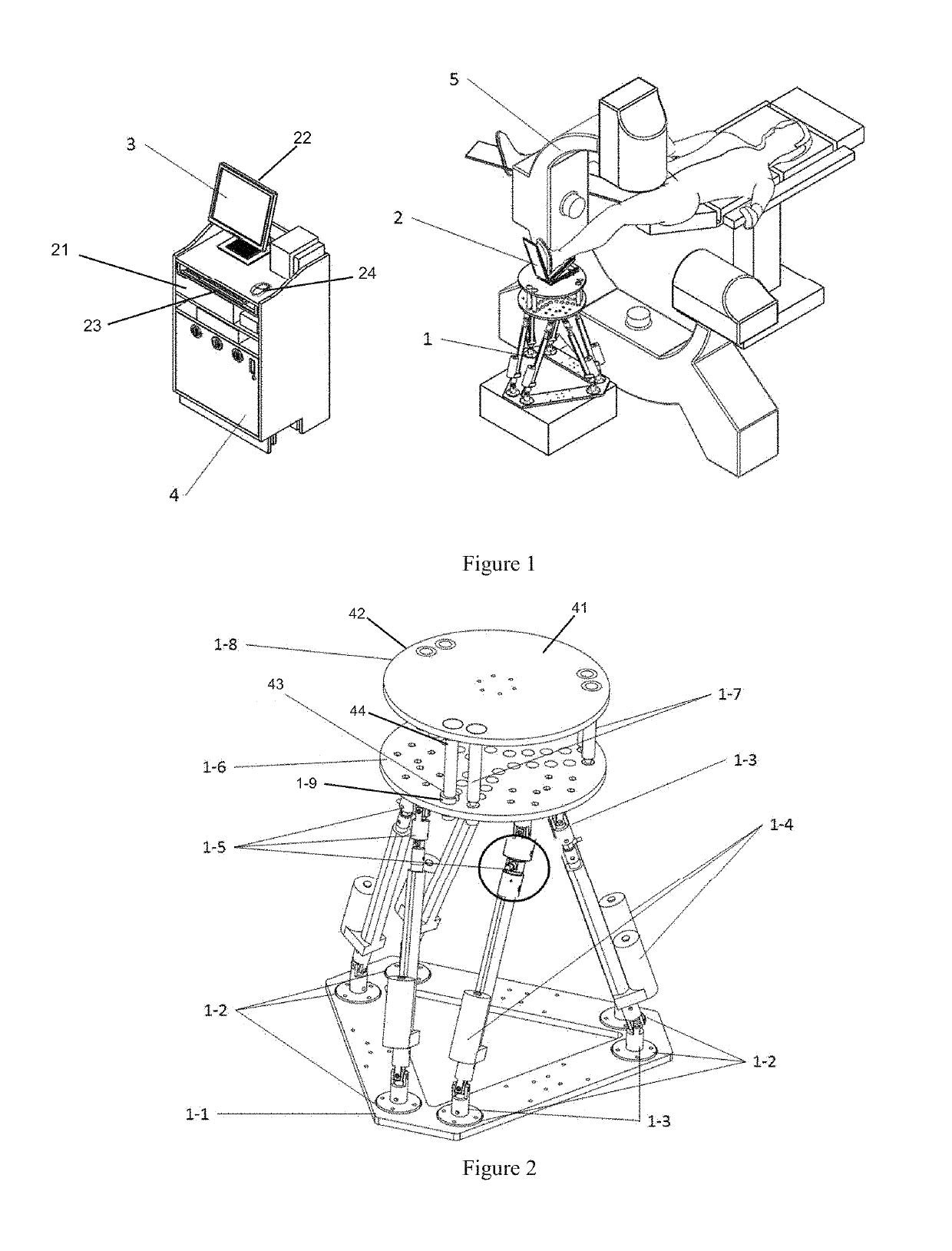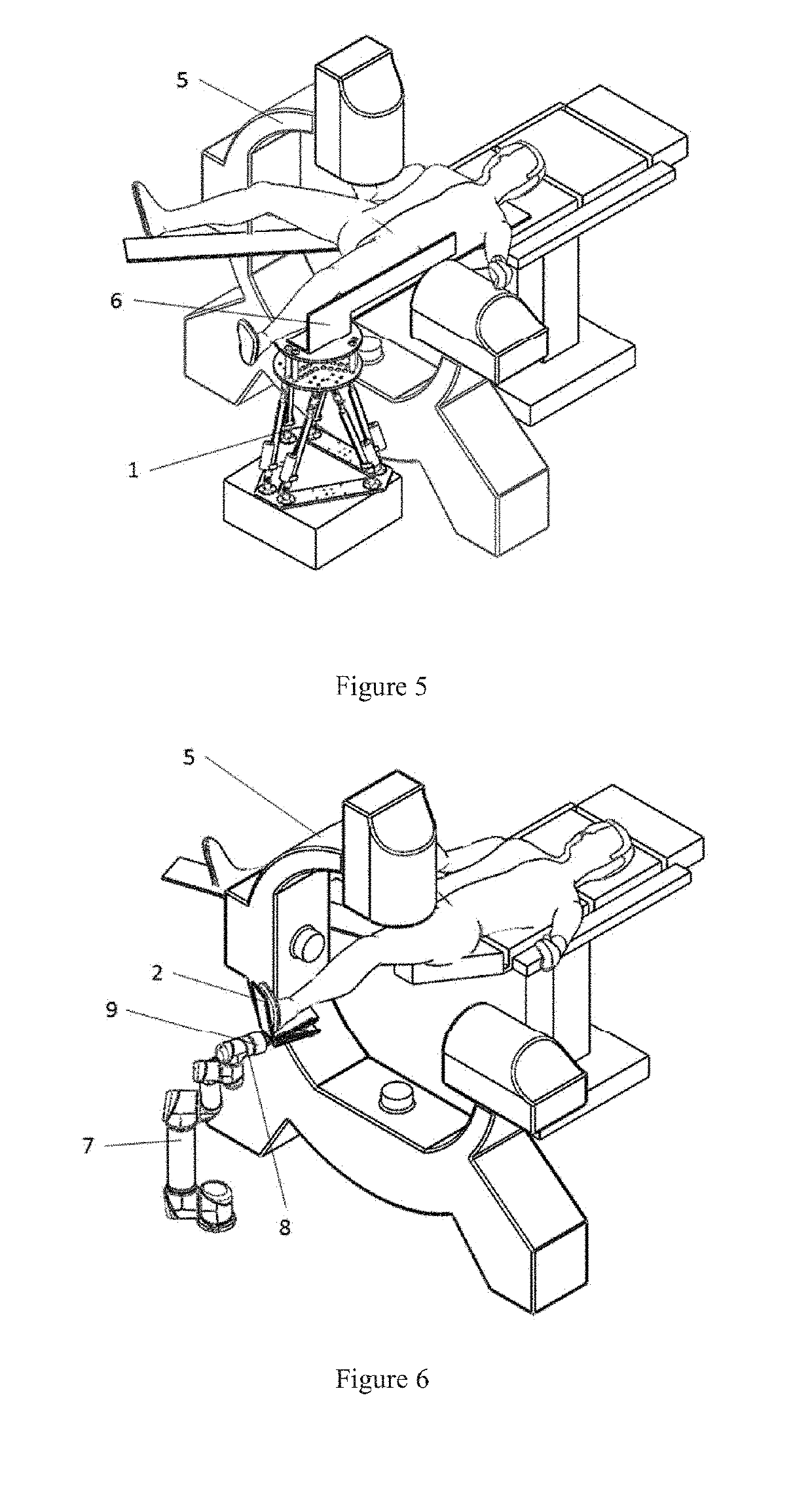Remotely Operated Orthopedic Surgical Robot System for Fracture Reduction with Visual-servo Control Method
a robotic surgery and remote control technology, applied in the field of orthopaedic surgical robots, can solve problems such as loss of system accuracy, x-ray radiation, and inability to perform surgery under the control of a doctor's health, and achieve the effect of reducing long bone fractures
- Summary
- Abstract
- Description
- Claims
- Application Information
AI Technical Summary
Benefits of technology
Problems solved by technology
Method used
Image
Examples
Embodiment Construction
[0043]Hereinafter, the exemplary embodiments of the invention are described in detail in combination with the accompanying drawings. For clarity and concision, the specification does not describe all the features of practical implementations. However, it should be understood that, in the process of developing any practical embodiments, many implementation-specific decisions must be made to achieve the specific targets of developers, for instance, to be in line with those limiting conditions that are related to a system and business, and these limiting conditions may change with the different implementations. It also has to be understood that although such development work may be complex and take long time, the development work is merely a routine task for those of skill in the art having the benefit of this disclosure.
[0044]Here, it should be noted that for preventing unnecessary details from obscuring the invention, only device structures, methods and processing steps that are clos...
PUM
 Login to View More
Login to View More Abstract
Description
Claims
Application Information
 Login to View More
Login to View More - R&D
- Intellectual Property
- Life Sciences
- Materials
- Tech Scout
- Unparalleled Data Quality
- Higher Quality Content
- 60% Fewer Hallucinations
Browse by: Latest US Patents, China's latest patents, Technical Efficacy Thesaurus, Application Domain, Technology Topic, Popular Technical Reports.
© 2025 PatSnap. All rights reserved.Legal|Privacy policy|Modern Slavery Act Transparency Statement|Sitemap|About US| Contact US: help@patsnap.com



